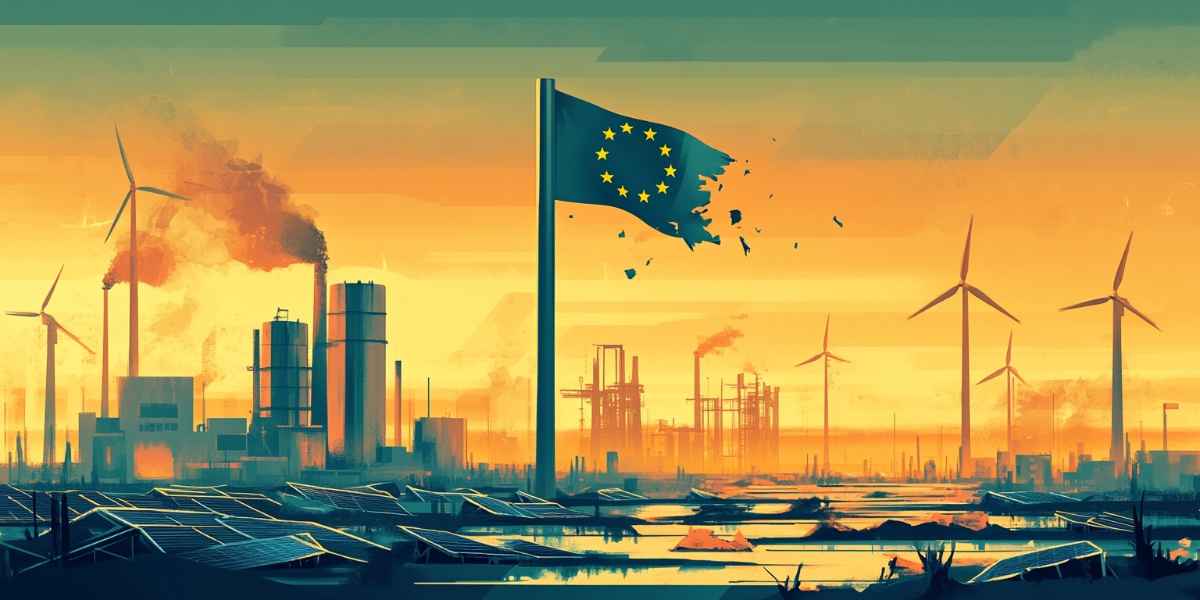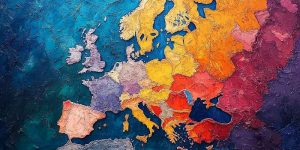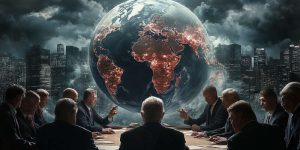The Great Green Failure: How The EU’s Climate Transition Made Europe Poorer, Weaker and More Corrupt

The promise of a green utopia
The European Union’s “green transition” was marketed as a revolution in energy, economics, and ethics. With grand promises of carbon neutrality, sustainable innovation, and energy independence, EU officials embarked on an ambitious plan to decarbonize Europe by 2050.
But after more than a decade of policies, subsidies, and regulation, the outcome is unmistakable: the transition has failed. It is neither green, nor economically viable, nor socially just. It has instead drained public resources, increased dependency, and facilitated mass-scale corruption.
This transition, initially presented as a path toward modernity and environmental responsibility, has turned into an ideological project detached from practical realities. The rhetoric was full of idealism — “saving the planet,” “green jobs,” “energy justice” — yet the policy implementation was riddled with inconsistencies, market distortions, and unintended consequences.
Not green at all
Dirty supply chains and imported destruction
Despite being labeled as “clean,” many so-called green technologies are dependent on destructive and polluting processes. The rare earth minerals required for wind turbines, solar panels, and electric vehicles are mined in countries with poor environmental regulations and appalling labor conditions. In particular, cobalt and lithium extraction in the Democratic Republic of Congo and South America have led to environmental destruction, water shortages, and child labor (The Hidden Cost of the Green Energy Transition, Heinberg).
Europe may have reduced emissions domestically, but only by outsourcing its environmental impact to the Global South. The illusion of “green” is sustained only because the most damaging aspects of production are hidden from European consumers. In the name of ethics, the EU turns a blind eye to African child labor and poisoned Andean rivers.
Moreover, decommissioned wind turbines and solar panels create toxic waste with limited recycling options. As Green Tech’s Dirty Secrets by Vries explains, “the clean energy industry has no real plan for end-of-life disposal — it simply hopes future generations will solve that problem.”
Inefficient and wasteful technologies
Wind and solar energy suffer from low energy density and intermittency. As a result, they require massive land use, backup systems (often fossil-based), and costly storage. Germany’s “Energiewende” alone has consumed over €500 billion, yet coal power was reactivated in 2022 due to grid instability and gas shortages (Germany’s Green Energy Meltdown, Mills).
Instead of replacing fossil fuels, renewables have supplemented them — at a higher total cost to citizens and the environment. Solar panels produce nothing at night; wind turbines often generate too much or too little energy depending on weather patterns. To maintain grid balance, fossil plants must be kept online anyway.
In addition, the raw material requirements for green infrastructure dwarf those of conventional energy. According to the International Energy Agency, a wind plant requires up to nine times more mineral resources than a gas-fired plant. This makes the transition not only expensive but also physically unsustainable at global scale.
Not economically viable
Soaring costs, broken promises
The EU’s climate policies have led to skyrocketing electricity prices across the continent. Households and businesses now pay more for less reliable energy. Manufacturing sectors in countries like Germany, the Netherlands, and Italy face deindustrialization as production relocates to regions with cheaper and more stable energy.
According to The Cost of Net Zero, published by Civitas, the UK alone is expected to spend over £4.5 trillion on decarbonization — costs which will ultimately fall on taxpayers and consumers (The Cost of Net Zero, Lilley). France and Germany follow close behind in per capita burden, yet show no corresponding gains in energy security or emissions stability.
The economic logic of net zero collapses under scrutiny: productivity falls while costs rise. Investment that could have gone into innovation or industry is diverted into politically favored green projects — often unproven, inefficient, and speculative.
A tax on the poor, a subsidy for the rich
Green subsidies disproportionately benefit wealthy citizens and multinational companies. The upper class can afford solar panels, electric cars, and tax credits, while lower-income households pay for the inflated energy bills, green taxes, and carbon pricing mechanisms.
This regressive dynamic deepens inequality under the guise of “climate justice” (Green Inequality, Jenkins). Wealthy urbanites get the perks; rural working-class citizens get restrictions, levies, and unaffordable fuel. Dutch farmers, for instance, are being pushed off their land in the name of nitrogen reduction, while tech executives cash in on green bonds.
The injustice is structural. Carbon pricing and emissions trading do not change elite consumption — they merely monetize it. The poor are not allowed to drive old diesel cars; the rich are allowed to pollute if they buy credits.
More dependent, not more independent
The gas trap and the Russian fallout
Ironically, as the EU decommissioned coal and nuclear plants, it increased reliance on imported natural gas — much of it from Russia. When the Ukraine conflict began, the EU found itself strategically vulnerable and energy-starved.
The idea that green energy would bring autonomy was a myth. In reality, Europe merely swapped one form of dependency (coal and oil) for another (Russian gas and Chinese solar panels). Germany, once energy independent, became hostage to Gazprom.
The fallout has been severe: energy rationing, factory closures, and inflation across the eurozone. In 2022 and 2023, entire sectors of industry — from chemicals to aluminum — scaled back or shut down operations due to unaffordable energy prices.
China’s control of the green supply chain
China dominates global production of solar panels, wind turbines, batteries, and rare earth metals. The EU’s transition has thus empowered a geopolitical rival and undermined its own strategic resilience. In 2022, over 80% of solar panels installed in Europe were made in China (Europe’s Green Dependency, CRU Group).
Moreover, green infrastructure imports are paid for in euros and dollars — increasing trade deficits and enriching authoritarian regimes that do not share European values. Europe’s “green future” is being built in Chinese factories using African cobalt and Middle Eastern rare earths.
Green corruption and elite enrichment
A feeding trough for lobbyists and consultants
The Green Deal and other climate programs have become vast financial machines benefiting a narrow class of insiders: NGO networks, climate consultants, green investors, and renewable lobbyists. Billions of euros in subsidies are distributed with limited transparency, questionable results, and political favoritism.
Scandals have already emerged. In France, a €1 billion hydrogen investment fund was discovered to be funneled into shell companies tied to political allies. In Brussels, green lobbying groups have received EU grants while simultaneously lobbying for more grants (The Great Green Grift, Gabbard).
Climate bureaucracies — national and EU-level — now employ thousands of people whose careers depend on the perception of crisis. They are not incentivized to solve problems, only to manage them.
Carbon markets and climate profiteers
The EU Emissions Trading System (ETS) was intended to reduce emissions via market mechanisms. Instead, it created a speculative playground for banks and traders, driving up costs while failing to lower total emissions.
Large corporations now buy “carbon offsets” to greenwash their image, while emitting as much — or more — than before. The system rewards appearance, not outcome (Smoke and Mirrors: Carbon Offsets Explained, MacKay). Airlines, for instance, emit more CO₂ than ever — but advertise carbon neutrality thanks to reforestation offsets in faraway countries.
ETS permits are also hoarded and manipulated for financial gain, turning climate policy into a derivatives market.
Citizens poorer, colder, and angrier
Energy poverty on the rise
Across Europe, citizens are being asked to consume less, heat less, and travel less — not because of scarcity, but because of ideology-driven planning. Energy poverty has become a major issue, especially in Eastern and Southern Europe.
In 2023, over 50 million Europeans reported being unable to adequately heat their homes in winter (Europe’s Energy Divide, Eurostat). Meanwhile, green transition executives receive multi-million euro bonuses.
The working class has been priced out of modern life under the moral pretense of “saving the planet.” The climate agenda is becoming a civilizational downgrading project, where economic hardship is reframed as ethical virtue.
Protests and political backlash
Public anger is rising. Farmers in the Netherlands, Belgium, and Germany have protested anti-nitrogen policies that threaten food production in the name of emissions targets. French citizens rejected punitive fuel taxes under the Yellow Vests movement. These are not isolated incidents — they are signs of deep democratic disconnect.
The green agenda, as imposed by unelected EU technocrats, is meeting its limit. Citizens are beginning to realize that this is not about nature — it’s about control.
Conclusion: the climate scam of the century
The EU’s green transition was sold as a path to sustainability, prosperity, and sovereignty. In practice, it has delivered pollution exported abroad, unaffordable energy, weakened strategic autonomy, and a goldmine for green profiteers. The entire scheme has served as a vehicle for ideological control and elite enrichment — with citizens footing the bill.
Europeans deserve real environmental stewardship — not technocratic schemes designed by lobbyists, enforced by bureaucrats, and funded by taxpayers without consent.
It’s time to call the green transition what it really is: a monumental failure built on lies, corruption, and the erosion of common sense.


















